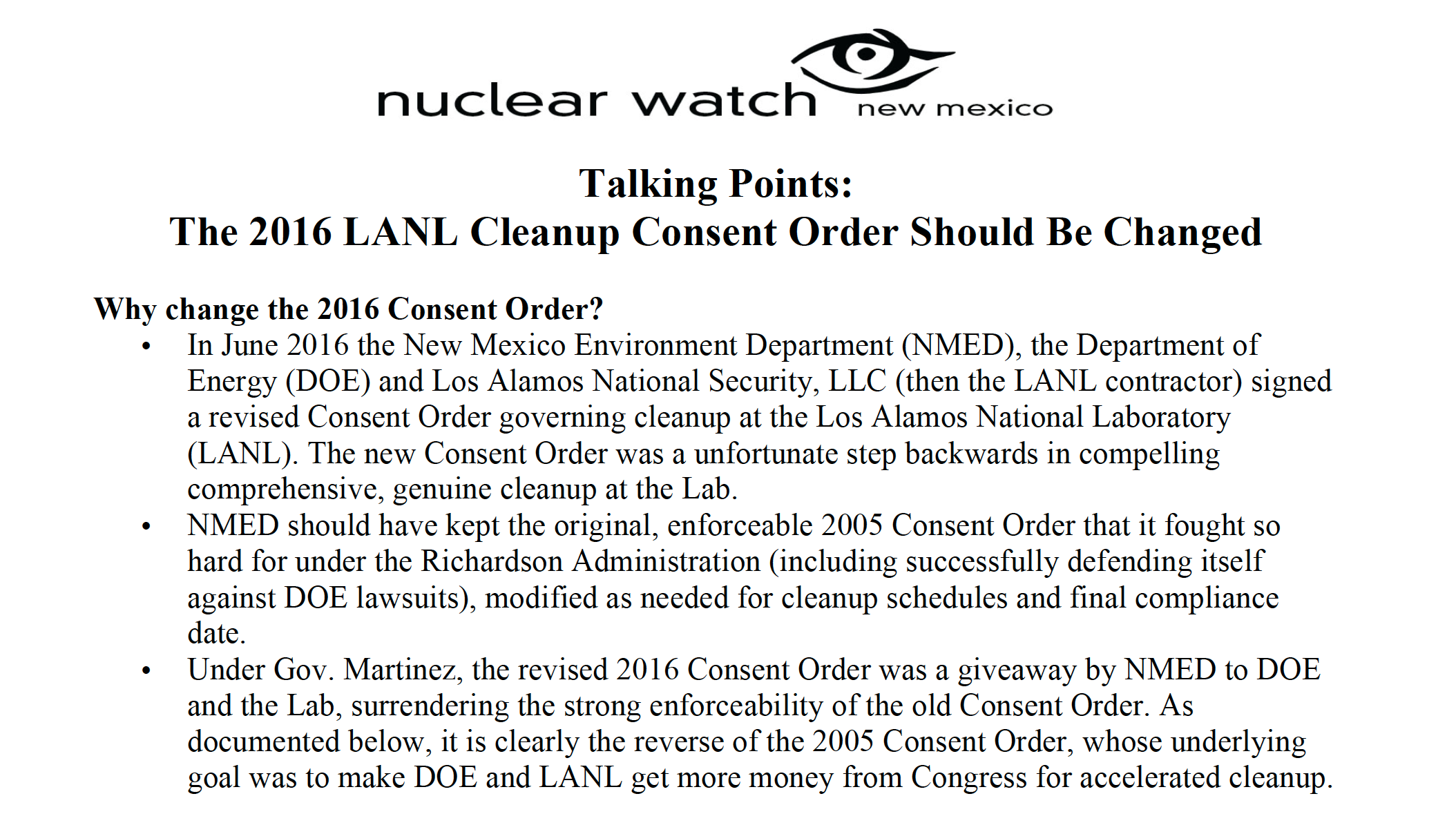2023 News Articles – All Posts
Nothing Found
It seems we can’t find what you’re looking for. Perhaps searching can help.
2022 Select Highlighted Press Items
Nuclear Modernization is the ’Absolute Minimum,’ STRATCOM Commander Says | March 8, 2022
US tested hypersonic missile in mid-March but kept it quiet to avoid escalating tensions with Russia | April 4, 2022
Putin’s Nuclear Threats Are a Wake-Up Call for the World | March 15, 2022
Intelligence report determines that Russia's WMD threats will grow as losses mount in Ukraine | March 19, 2022
China and the United States: It’s a Cold War, but don’t panic | March 10, 2022
Russian military doctrine calls a limited nuclear strike “de-escalation.” Here’s why. | March 8, 2022
North Korea says it will strike with nuclear weapons if South attacks | April 4, 2022
Flying Under The Radar: A Missile Accident in South Asia | April 4, 2022
2022 News Articles
With a New Weapon in Donald Trump’s Hands, the Iran Crisis Risks Going Nuclear
“Regardless of presidencies, nuclear planning tends to have a life of its own…Iran is very much in the crosshair.” – Hans Kristensen
Nuclear planners operate from “relatively vague presidential guidance,” writing scenarios, conducting war games, and adjusting plans, weapons and the posture of forces to anticipate countless possible scenarios.
BY: WILLIAM ARKIN | newsweek.com
Ten days before Donald J. Trump was elected president in 2016, the United States nuked Iran. The occasion: a nuclear war exercise held every year in late October. In the war game, after Iran sank an American aircraft carrier and employed chemical weapons against a Marine Corps force, the Middle East commander requested a nuclear strike, and a pair of B-2 stealth bombers, each loaded with a single nuclear bomb, stood by while the president deliberated.

“Testing our forces through a range of challenging scenarios validates the safety, security, effectiveness and readiness of the strategic deterrent,” Adm. Cecil D. Haney, then the commander of U.S. Strategic Command, said as the exercise got underway.
DOE’s Nuclear Agency Moving to Manufacture New Plutonium Bomb Cores in Violation of Environmental Law and Court Order
Natural Resources Defense Council, Nuclear Watch New Mexico, SRS Watch, Tri-Valley CAREs Assert “Pit” Pursuit Violates National Environmental Policy Act (NEPA)
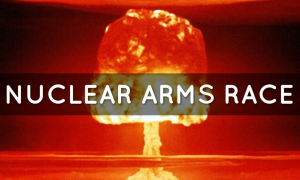
COLUMBIA, SC, USA, January 9, 2020 /EINPresswire.com/ — The Department of Energy’s semi-autonomous National Nuclear Security Administration (NNSA) has announced that it is proceeding with aggressive plans to expand the production of plutonium pits without required nation-wide “programmatic” public review. The Natural Resources Defense Council, Nuclear Watch New Mexico, Savannah River Site Watch and Tri-Valley CAREs assert this is in violation of the legal requirements of both the National Environmental Policy Act (NEPA) and a 1998 court order that stipulates that DOE must prepare a “programmatic environmental impact statement” (PEIS) when it plans to produce more than 80 pits per year. Plutonium pits are the radioactive cores of nuclear weapons.
Jay Coghlan of Nuclear Watch New Mexico concluded, “We need to find smart ways to face the world’s renewed nuclear arms race. Unnecessary expanded production of questionable plutonium bomb cores is not the way to do it. Instead of aggressively modifying nuclear weapons the U.S. should carefully preserve its existing, reliable, extensively tested nuclear weapons stockpile while working toward a future world free of them. It’s that kind of analysis and consideration of credible alternatives that the National Environmental Policy Act should give Americans instead of the nuclear weaponeers rubber stamping their self-interested agenda of nukes forever at the taxpayer’s expense.”
U.S. plutonium bomb core production ended in 1989 when the FBI raided the Rocky Flats Plant near Denver while investigating environmental crimes. In 1997, DOE relocated pit production to the Los Alamos National Laboratory (LANL) in New Mexico after completing the Stockpile Stewardship and Management Programmatic Environmental Impact Statement. Production was capped at 20 pits per year.
LANL waste cleanup agreement gets chilly reception
“The 2016 consent order should be jettisoned in its entirety,” said Jay Coghlan, executive director of Nuclear Watch New Mexico. “And the fundamental principle is the state should be in the driver’s seat and not DOE.”
To back up his argument, Coghlan read some of the order’s guidelines, such as letting the federal agency set its own cleanup targets according to its budgetary constraints.
BY: SCOTT WYLAND | santafenewmexican.com
LOS ALAMOS — While some people coolly suggested a list of procedural changes, others vented Thursday about a waste cleanup agreement they say cuts out the public and gives the U.S. Energy Department too much power to call the shots.
US plutonium production plan likely to spur legal challenge
Nuclear watchdogs, government accountability advocates and other critics argue that the decision skirts requirements of the National Environmental Policy Act and a decades-old court order that included a mandate for an environmental review when the federal government embarked on plans to boost production to more than 80 of the nuclear cores a year.
BY: SUSAN MONTOYA BRYAN | apnews.com – washingtonpost.com Copyright 2020 The Associated Press
FILE – This undated file aerial view shows the Los Alamos National Laboratory in Los Alamos, N.M. The agency that oversees the United States’ nuclear arsenal says it doesn’t need to do any broad environmental reviews of a proposal that calls for ramping up production of plutonium triggers at federal installations in New Mexico and South Carolina. The National Nuclear Security Administration on Wednesday, Jan. 8, 2020, released a supplemental analysis related to the project, saying the determination was made after reviewing extensive documentation and public comments that were received last year. (The Albuquerque Journal via AP, File)ALBUQUERQUE, N.M. — The agency that oversees the United States’ nuclear arsenal says it doesn’t need to do any broad environmental reviews of a proposal that calls for ramping up production of plutonium triggers at federal installations in New Mexico and South Carolina.
The National Nuclear Security Administration on Wednesday released a supplemental analysis related to the project, saying the determination was made after reviewing extensive documentation and public comments that were received last year.
A key component of every nuclear weapon, most of the plutonium cores in the stockpile were produced in the 1970s and 1980s, according to the nuclear agency.
Nuclear watchdogs, government accountability advocates and other critics argue that the decision skirts requirements of the National Environmental Policy Act and a decades-old court order that included a mandate for an environmental review when the federal government embarked on plans to boost production to more than 80 of the nuclear cores a year.
NNSA: No new programmatic environment study needed for plutonium pit production at LANL
“NNSA’s refusal to complete programmatic environmental review before plunging ahead with plans to more than quadruple the production authorization for plutonium bomb cores flies in the face of our country’s foundational environmental law, the National Environmental Policy Act, and a standing federal court order mandating that the government conduct such a review,” – Marylia Kelley, executive director of Tri-Valley CARES
BY: KENDRA CHAMBERLAIN | nmpoliticalreport.com
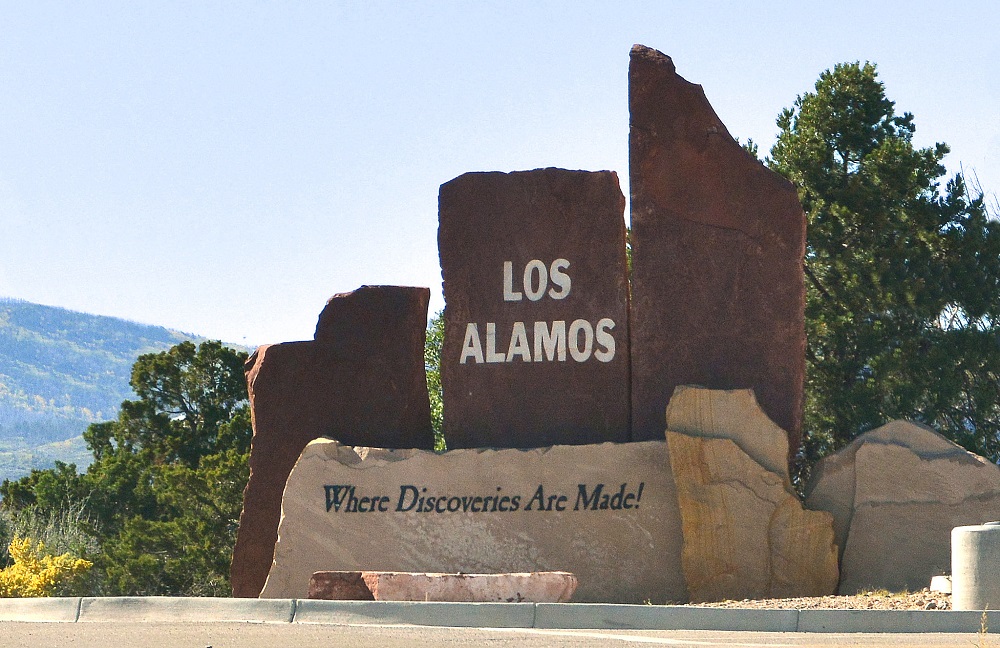
The Department of Energy’s National Nuclear Security Administration (NNSA) will not complete a programmatic study for environmental impacts of increased plutonium pit production at Los Alamos National Labs (LANL) and one other lab located in South Carolina. The decision to not do so drew criticism from Nuclear Watch NM and other groups, who argue such assessments are required by law under the National Environmental Policy Act (NEPA) and an existing court order.
Plutonium pits are the radioactive cores of nuclear warheads where the chemical reactions occur that cause the warhead to detonate. The U.S. made thousands of cores during the Cold War, but pit production has all but stopped in the last thirty years.
Now, the federal government is getting ready to ramp up pit production in order to modernize the U.S. nuclear arsenal and “assure the nation has a safe, secure and credible deterrent,” said Lisa Gordon-Hagerty, the Department of Energy Under Secretary for Nuclear Security and the NNSA Administrator, in a statement. The 2018 Nuclear Posture Review calls for at least 80 plutonium pits to be produced per year by 2030, with a target of 30 pits produced annually at LANL and 50 pits produced annually at Savannah River Site.
The Dubious Moral Justification for a Nuclear Second Strike
The aim of presenting the case for the continued possession of these terrifying weapons that hold the potential to destroy all life on earth this way seems to be to convince citizens that nuclear weapons are morally justifiable and thus somehow ‘acceptable.’
ARTICLE BY GERARD BOYCE | commondreams.org

Poised as the nuclear powers appear to be to resume the nuclear arms race, leaders of these countries have been at pains to assure their countrymen and the rest of the world that, though determined to maintain and even expand their nuclear arsenals, they will only use them for the purposes of a second strike i.e. in retaliation to a nuclear first strike by a nuclear-armed belligerent. Their pledges are meant to reassure us that nuclear weapons are for defensive rather than offensive purposes. The aim of presenting the case for the continued possession of these terrifying weapons that hold the potential to destroy all life on earth this way seems to be to convince citizens that nuclear weapons are morally justifiable and thus somehow ‘acceptable’. For a number of reasons, however, a second strike may not be as morally defensible as leaders would have us believe.
Trump budget coming Feb. 10 — here’s what you can expect
BY: AARON MEHTA & JOE GOULD | defensenews.com
WASHINGTON — The Trump administration plans to submit its fiscal 2021 budget request to Congress Feb. 10, with defense spending expected to be essentially flat compared to the previous year.A spokesperson for the Office of Management and Budget confirmed to Defense News that the date for the budget submission has been locked in. The date was first reported by Politico.
President Donald Trump signed off on the FY20 budget, including $738 billion for defense, on Dec. 20, following almost three months of the government running under a continuing resolution.
The two-year budget deal from last summer called for $740 billion in defense spending for FY21, essentially flat. The budget is expected to continue the department’s focus on implementing the National Defense Strategy, which prioritizes challenging China and Russia.
New Mexico reconsidering 2016 waste agreement with LANL
The state of New Mexico is reconsidering its 2016 pact with the U.S. Department of Energy on how to regulate the cleanup of decades-old hazardous waste at Los Alamos National Laboratory.
Ryan Flynn, who became the state’s environment secretary in 2013, granted the lab 150 deadline extensions during his tenure, said Jay Coghlan, executive director of Nuclear Watch New Mexico.
Shortly after Flynn announced in 2016 that the consent order was being revised, the Energy Department reduced its top-range estimate for the long-term cleanup to $3.8 billion and said it would need at least 20 years to complete it, Coghlan said.
That reduced the yearly cleanup projection to $150 million from the earlier $250 million estimate, Coghlan said.
“It’s no coincidence that a mere few months after the 2016 consent order came out, DOE low-balled its life-cycle estimate,” he said.
BY: SCOTT WYLAND | santafenewmexican.com
The administration of Democratic Gov. Michelle Lujan Grisham wants to revisit the agreement — known as a consent order — that the state Environment Department crafted under Republican Gov. Susana Martinez to replace a more stringent 2005 version that expired at the end of 2015.
The public will have a chance to air views about the current consent order and suggest changes at a meeting Thursday at the University of New Mexico’s Los Alamos campus. The meeting is being held in response to people expressing concerns about the consent order to state regulators and legislative leaders, said Maddy Hayden, a spokeswoman for the Environment Department.
January 9th: New Mexico Environment Department to Host Los Alamos Public Meeting
Why the new US ICBMs would be too expensive even if they were free
“Experts estimate that it would take two Russian warheads to destroy with high confidence one of the 400 active US ICBMs, each armed with a single warhead. This might seem like a good deal, until you ask what the impact of 800 Russian warheads exploding on US territory would be…The long-term contamination would be about ten times greater than that from the Chernobyl accident, rendering a large swath of the Midwest uninhabitable for generations.”
BY: ROBERT J. GOLDSTON | thebulletin.org
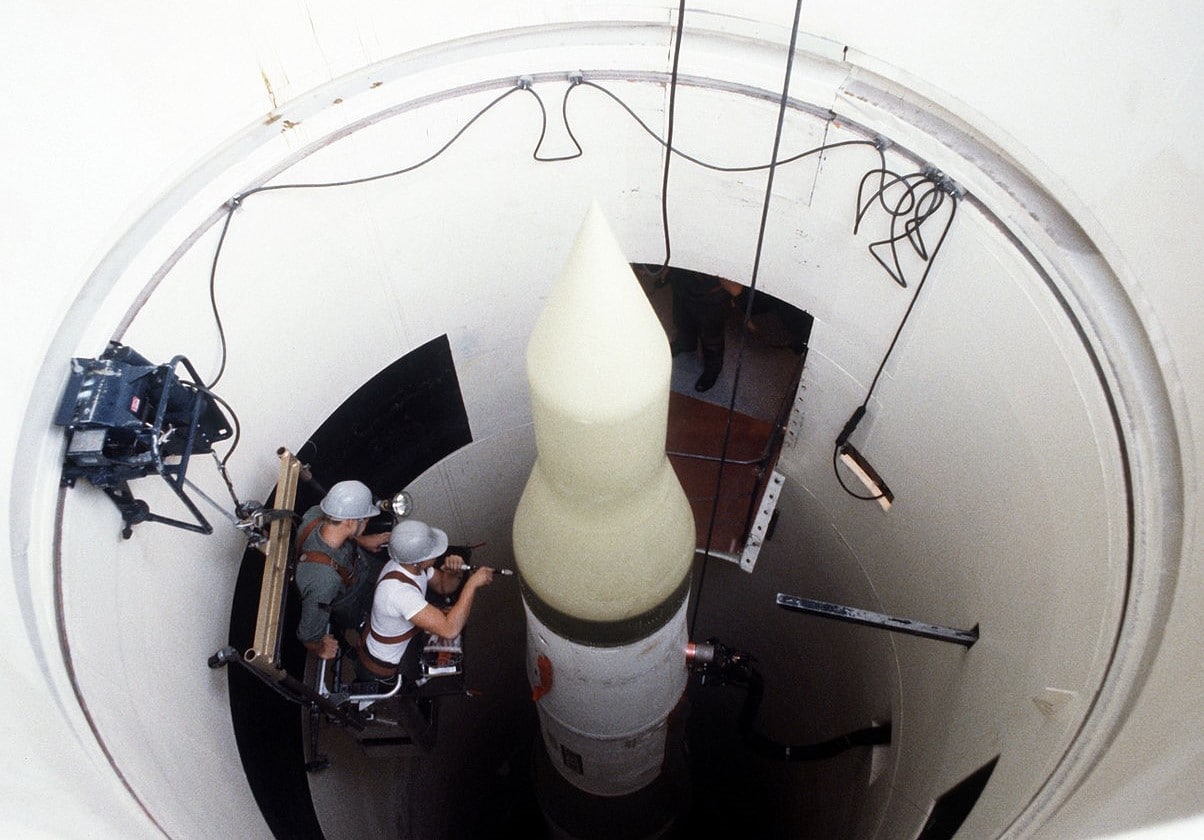
The proposed US nuclear modernization program includes replacing the 400 existing Minuteman III missiles with a new set of “Ground-Based Strategic Deterrent” missiles and their associated facilities. The cost for this modernization is very large, with an advertised price tag of $85 billion, and if history is any guide, a substantial cost escalation is likely. On the one hand, if these silo-based intercontinental ballistic missiles (ICBMs) deter attacks that would cost tens of millions of lives, then they are worth this much many times over. On the other hand, if they are more likely to cause massive numbers of human deaths, then they are immensely expensive even if they cost nothing.
The primary argument for silo-based ICBMs is that they would “sponge up” a large number of Russian warheads if the United States were attacked.
Final Supplement Analysis (SA) and Determination on Complex Transformation Supplement Environmental Impact Statement (SPEIS) for Expanded Pit Production to be Released Later This Week
The Department of Energy’s National Nuclear Security Administration (DOE/NNSA) has approved a final Supplement Analysis (SA) and determination on the Complex Transformation Supplement Environmental Impact Statement (SPEIS) which evaluated whether increasing capabilities to produce a minimum of 50 pits per year at a re-purposed Mixed-oxide Fuel Fabrication Facility (MFFF) at the Savannah River Site (SRS) and a minimum of 30 pits per year at Los Alamos National Laboratory (LANL), with additional surge capacity at each site if needed, would require the preparation of a new or supplement EIS. This SA is the programmatic, complex-wide analysis mentioned in the Notice of Intent for the site-specific SRS EIS that was published in the Federal Register (FR) on June 10, 2019, and the final of the draft SA that was released for an approximately 45-day public comment period on June 28, 2019.
It’s Been 32 Years since the Conclusion of the INF Treaty Yet Arms Control Is Still Vital
ARTICLE BY STEPHAN KIENINGER | historynewsnetwork.org
Gorbachev and Reagan sign the INF TreatyIn August, the United States withdrew from the landmark INF Treaty of 1987 due to the Russian Federation’s continuing violation of the treaty and Vladimir Putin’s reckless deployment of the Russian 9M729 cruise missile. Another crucial arms control treaty, the New START agreement, is set to expire in early 2021. Recently, George Shultz and Mikhail Gorbachev called American and Russian decision makers to preserve the INF Treaty. (1)
More than thirty years ago, Shultz and Gorbachev stepped forward with President Reagan to change history’s direction. Reagan and Gorbachev signed the INF Treaty on the occasion of their historic Washington Summit on December 8, 1987. The unprecedented agreement eliminated all US and Russian missiles between the ranges of 500 to 5500 kilometers. The two countries destroyed a total of 2,692 ballistic and cruise missiles by the treaty’s deadline of June 1, 1991, with verification measures that were previously unimaginable.
If the Trump plan survives legal challenges, polluters would no longer need a permit to release contaminated water into ephemeral streams and wetlands that aren’t immediately adjacent to protected waters. This would, according to New Mexico’s Environment Department, eliminate about 40% of the state’s water pollution permits, including those held by wastewater treatment plants, hard-rock mines and coal mines.
The effect this could have on the state’s drinking water is illustrated most starkly at Los Alamos National Laboratory, the former Manhattan Project site that serves as a center of the country’s nuclear research and development.
BY: ANNA M. PHILLIPS | latimes.com
Trump’s Plans to Strip Clean Water Protections Leave New Mexico Fearing Pollution and Health Risks
The effect this could have on the state’s drinking water is illustrated most starkly at Los Alamos National Laboratory, the former Manhattan Project site that serves as a center of the country’s nuclear research and development.
The 40-square-mile site where scientists built the first atomic bomb remains contaminated from that era.
BY: Anna M. Phillips, The Los Angeles Times latimes.com Jan. 3, 2020
Twice a day, every day, Vicente Fernandez walks along the banks of the Rio Fernando, inspecting the river that has shaped his valley’s fortunes for generations.
Like his father and his grandfather before him, Fernandez is a mayordomo — the manager of a centuries-old network of irrigation ditches called acequias that divert water from the river into nearby fields. Hundreds of families in the Taos Valley rely on it to nourish their gardens and fruit trees and to replenish the aquifer they depend on for drinking water.
But the future of the Rio Fernando and its acequias is murky.
Early in the coming year, President Trump’s Environmental Protection Agency plans to roll back clean water rules, abolishing limits on how much pollution can be dumped into small streams and wetlands.
Federal data suggest 81% of streams in the Southwest would lose protections. A large share of streams in California and other Western states will be hard hit.
Nowhere are the stakes as high as in New Mexico. Environmental regulators in the state estimate that the new rule could leave 96% of the state’s waterways and wetlands unprotected from pollution from coal mines, factory waste, pesticide runoff and other sources.
And New Mexico does not have its own regulations to fill the void, which makes its waterways particularly vulnerable.
EPA: Permit will regulate polluted stormwater in Los Alamos County
The U.S. Environmental Protection Agency will require a federal pollution permit be used to regulate Los Alamos County’s contaminated stormwater, which for years has flowed into streams and the Rio Grande, a primary source of drinking water.
BY: SCOTT WYLAND | santafenewmexican.com
 Attorneys representing the Taos-based advocacy group Amigos Bravos said their client’s September lawsuit against the EPA pushed the agency to require the permitting under the Clean Water Act.
Attorneys representing the Taos-based advocacy group Amigos Bravos said their client’s September lawsuit against the EPA pushed the agency to require the permitting under the Clean Water Act.
The EPA issued preliminary findings in 2015 that showed pollutants in some parts of Los Alamos National Laboratory property and other areas of Los Alamos County far exceeded state health and water quality standards, yet the agency failed to take action, according to the Oregon-based Western Environmental Law Center.
“The EPA finally took a hard look at where these pollutants are coming from,” said Andrew Hawley, a law center attorney, in an interview. “The pollutants of concern were showing up in the tributaries going into the Rio Grande.”
EPA representatives at the regional office in Dallas couldn’t be reached Tuesday to comment on the agency’s decision or discuss the timeline for implementing the permit.
NUCLEAR WASTE: Why the drive to fund interim storage unraveled
Efforts to break through the nation’s nuclear waste logjam in the fiscal 2020 spending package fell to familiar congressional infighting despite an apparent alignment in the push for interim storage, House lawmakers said yesterday.
This is a Nuclear Weapons Offer Trump ought not to refuse
It is not very often that the Kremlin issues a transcript of remarks by President Vladimir Putin with a sentence marked in highlighter, but that’s what happened Dec. 5 when Mr. Putin met with leaders of Russia’s defense industry.
Courting Disaster: How Not to Manage Existential Threats to National Security
Washington’s pursuit of national ballistic missile defense for the last twenty years has, as much as anything else, driven Russian and Chinese strategic nuclear weapons acquisition decisions.
BY: ROBERT GALLUCCI | nationalinterest.org
Photo: National InterestThere are a small number of threats to our nation’s security, involving truly catastrophic consequences, which may be managed by good public policy. Some of these involve uncertainties over scientific or technological developments that could lead to good, as well as very bad outcomes. Think designer biology, quantum computing and artificial intelligence. But two stand out both for the certainty and magnitude of their destructive impact: climate change and nuclear weapons.
What does good public policy look like when dealing with nuclear weapons? It looks like actions that reduce uncertainty, increase transparency and security, and decrease numbers. It is called “arms control.”
NEPA transformed federal land management — and has fallen short
A look back at the ground-breaking legislation on its 50th anniversary.
BY: ADAM M. SOWARDS | defenseone.com

In late January 1969, a blowout on Unocal’s Platform A leaked 3 million gallons of crude oil into the Pacific Ocean, just 6 miles from Santa Barbara, California. The spill — at the time, the largest in U.S. history — spread over 800 square miles, coated 8 miles of beaches and killed thousands of animals. Images of the devastation shocked a public increasingly worried about the environment and helped spur Congress to pass a sweeping law aimed at preventing similar disasters in the future — the National Environmental Policy Act.
President Richard Nixon signed NEPA into law on Jan. 1, 1970, from his home office on the Pacific Coast. The signing was a fitting launch for the environmental decade of the 1970s — a time when “America pays its debt to the past by reclaiming the purity of its air, its waters, and our living environment,” as Nixon said in his signing statement. “It is literally now or never.”
Reckoning with History is an ongoing series that seeks to understand the legacies of the past and to put the West’s present moment in perspective.
Sanders Calls Out ‘Deficit Hawks’ in Both Parties Who Support $738 Billion Pentagon Budget But Claim US Can’t Afford Medicare for All
“When it comes to giving the Pentagon $738 billion—even more money than it requested—there is a deafening silence within Congress and the ruling elites about what our nation can and cannot afford.”
ARTICLE BY JAKE JOHNSON | commondreams.org
In a scathing op-ed for the Washington Post Tuesday, Sen. Bernie Sanders took aim at Republican and Democratic “deficit hawks” who claim the U.S. cannot afford to guarantee healthcare to all, make higher education tuition-free, or fund other crucial domestic priorities but have no issue with voting to hand the Pentagon $738 billion.
“When it comes to giving the Pentagon $738 billion—even more money than it requested—there is a deafening silence within Congress and the ruling elites about what our nation can and cannot afford.” — Sen. Bernie Sanders
A Gateway to Nuclear Catastrophe: Democrats Retreat on Nuclear Policy
The 2020 authorization bill fails to check Trump’s worst impulses. Over 30 progressive national security organizations sent a letter to Congress opposing the final bill as doing “almost nothing to constrain the Trump administration’s erratic and reckless foreign policy.” Senator and presidential candidate Elizabeth Warren said she would oppose the bill, calling it a “$738 billion Christmas present to giant defense contractors.”
BY: TOM Z. COLLINA | defenseone.com
Question: How do you go from a National Defense Authorization Act that in July was opposed by every House Republican to one that was approved by more GOP votes than Democratic ones and that President Donald Trump called a huge win that he cannot wait to sign?
Answer: Add Space Force and parental family leave and take out all of the progressive national security provisions.
AP / ALEX BRANDON – In this 2018 photo, Sen. Jim Inhofe, R-Okla., left, stands as Rep. Mac Thornberry, R-Texas, second from left, speaks, accompanied by Rep. Adam Smith, D-Wash., and Sen. Jack Reed, D-R.I.The House passed the compromise NDAA last night; President Trump has said he will sign it. This final bill is a world apart from the version passed by House Democrats in July. The House version, ably led by Rep. Adam Smith, D-Washington, chair of the House Armed Services Committee, prohibited deployment of Trump’s new “low-yield” nuclear weapon for Trident submarines, which defense experts called “a gateway to nuclear catastrophe.”
Watch the Pentagon test a previously banned ballistic missile
ARTICLE BY: AARON MEHTA | defensenews.com
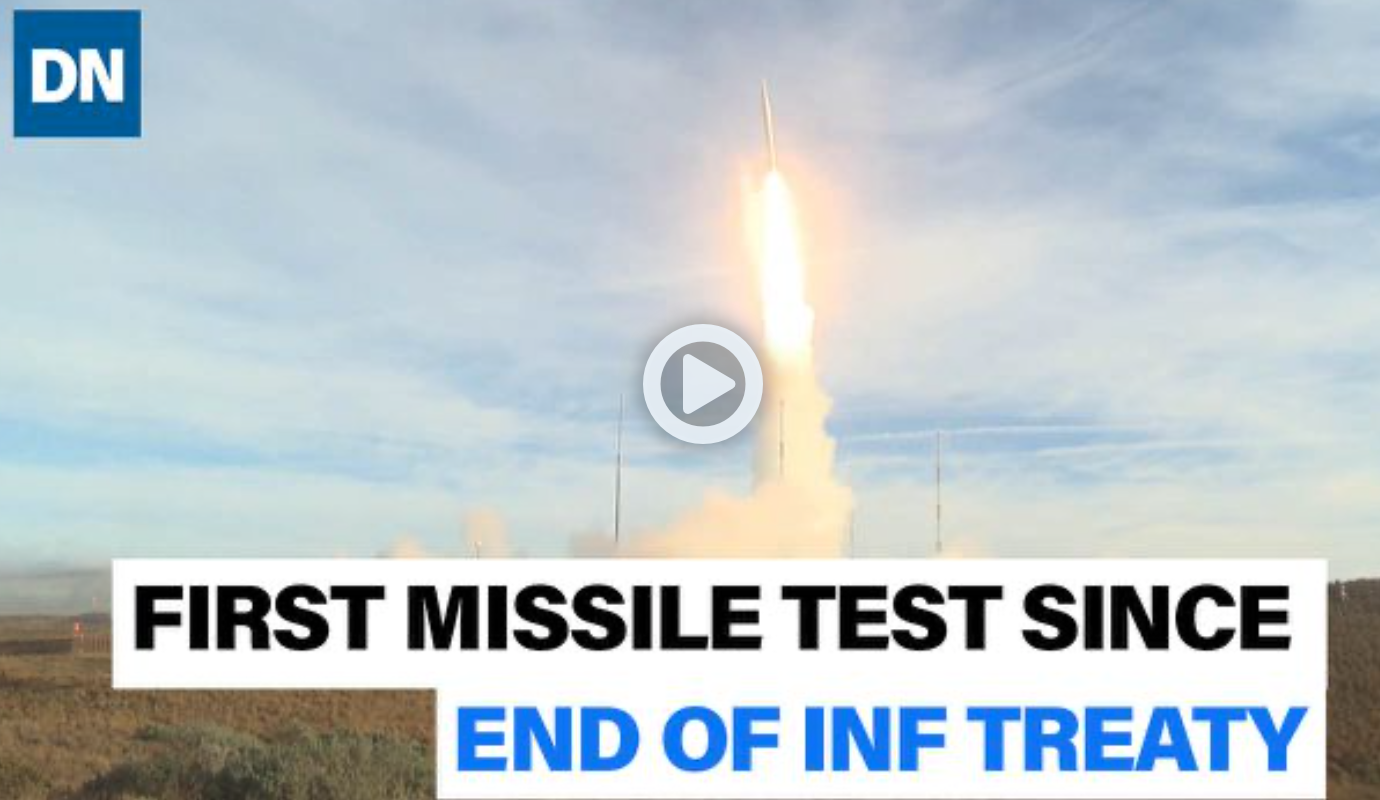
WASHINGTON — The U.S. has tested a ground-launched, intermediate-range ballistic missile with a range of more than 500 kilometers, the first such test since the country withdrew from the Intermediate-Range Nuclear Forces Treaty this year.
The test, which occurred Thursday at 8:30 a.m. PST, was configured to represent a conventional warhead. The test was anticipated for months, with Defense Department officials previously indicating they hoped to have it happen before the end of the year.
This Simulator Shows the Devastating Consequences of Global Nuclear War
Nuclear War Simulator, launching in 2020, lets the user design a plausible doomsday scenario and study the humanitarian impact. Just don’t call it a “game.”
ARTICLE BY: MATTHEW GAULT | vice.com
Full scale global nuclear war is hard to fathom. One nuclear launch could set off a chain of events that would radically alter life on the planet. Millions would die in the initial blasts and millions more would starve as the climate changed and our way of life withered. Just how are we supposed to reckon with the possibility of such wide-scale destruction?
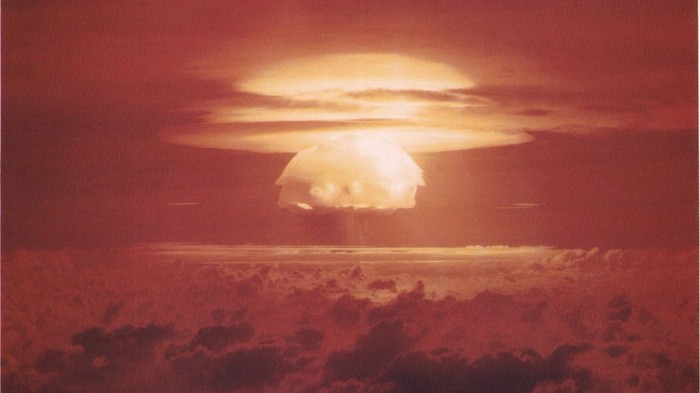
Programs like NUKEMAP let you plot individual bombs and video games like Defcon simulate the war, but neither comes close to rendering the devastation a doomsday scenario would bring. That’s what Nuclear War Simulator (NWS) is for.
Uranium contaminated property collapsing into Detroit River
Controversy continues to brew following revelations of repeated shoreline collapses into the Detroit River of a property contaminated with uranium, PCBs and other dangerous chemicals from an abandoned Manhattan Project contract facility in Detroit, Michigan.
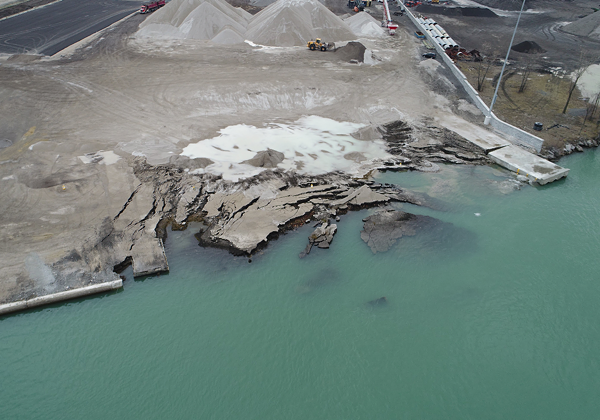
The most recent collapse into the river occurred on November 26 or 27, 2019 but was not reported until a week later with a tip off to the Windsor Star newspaper just across the river in Canada. A previous collapse into the river occurred in October 2011 did not apparently result in remediations. The old Revere Copper and Brass site, now known as Detroit Bulk Storage, was used in the 1940s to process more than a thousand tons of uranium that was rolled into fuel rods to make the fissionable material for the first atomic bombs at the end of World War II. The facility continued to operate as part of the nation’s atomic bomb assembly line well into the 1950s before winding down and eventually abandoned in 1984. It is considered just one of hundreds of nuclear weapons contractor sites that make up America’s forgotten nuclear “waste land.”
Here’s how Trump can get a win with Russia — and actually help all Americans
Extension of the New START Treaty would offer Trump an easy diplomatic win.
ARTICLE & ANALYSIS BY: MICHAEL MCFAUL | washingtonpost.com
This image, provided by the U.S. Air Force, shows an unarmed Minuteman III intercontinental ballistic missile test launch on Oct. 2 at Vandenberg Air Force Base in California. The image was taken with a slow shutter speed. (J.T. Armstrong/U.S. Air Force via AP)President Trump received Russian Foreign Minister Sergei Lavrov in the White House this week — a meeting that prompted considerable controversy, given the fraught backdrop of U.S.-Russia relations. Yet the coverage — additionally complicated by the impeachment proceedings taking place on Capitol Hill — almost entirely overlooked a crucial topic of the negotiations: the urgent need to keep alive a vital nuclear arms agreement.
Readouts and media reports reveal that Lavrov discussed the extension of the New Strategic Arms Reduction Treaty (START), set to expire in February 2021, with his American interlocutors. That’s the good news. The bad news is that Trump and Secretary of State Mike Pompeo both suggested that China must be included in a future strategic nuclear arms deal, hinting that they may not extend the New START Treaty without Chinese involvement.
That would be a major mistake. The United States and Russia should extend the New START Treaty, an outcome that clearly would serve U.S. national security interests. At the same time, U.S. arms control negotiators could begin discussions with their Chinese counterparts about a new, future multilateral treaty to limit the deployments of nuclear weapons. While doing so, they should recognize that China is already well below the limits on nuclear warheads and delivery vehicles specified by New START and thus need not be a party to this agreement.
But these two negotiations should be sequenced, not linked. Extend the New START Treaty with Russia first; begin strategy stability talks with Russia and China second.
Pentagon: Nuke official sexually harassed 3 women on his staff, resigns during probe
ARTICLE BY: TOM VANDEN BROOK | usatoday.com
WASHINGTON – A top Pentagon official for nuclear defense sexually harassed three women on his staff and resigned as an investigation substantiated the charges against him, the Defense Department inspector general reported Thursday.
Guy Roberts, who had served as the assistant Defense secretary for Nuclear, Chemical and Biological Defense Programs, resigned on April 2 amid a probe into allegations from three women on his staff that he had forced hugs and kisses on them and told inappropriate jokes. The inspector general’s investigation began Feb. 22.
The New START Treaty Keeps Nuclear Arsenals In Check And President Trump Must Act To Preserve It
Are the stars finally aligning for Washington and Moscow to extend the New START treaty?
ARTICLE & ANALYSIS BY: HANS KRISTENSEN & MATT KORDA | forbes.com
Nuclear arms control is reportedly on the agenda for a rush-meeting between Russian foreign minister Sergei Lavrov and US Secretary of State Mike Pompeo today. Over the past weeks, Russia had softened its preconditions for extending the New START Treaty––the only strategic arms control agreement still in place between the two nuclear superpower––while
President Donald Trump last week said that he had spoken with President Vladimir Putin and “we are – he very much wants to, and so do we, work out a treaty of some kind on nuclear weapons…”

The New START treaty limits US and Russian deployed strategic nuclear forces, and additionally facilitates inspections and exchanges of information on the status and movements of their intercontinental ballistic missiles and heavy bombers. Signed in 2010, the treaty expires in February 2021 but can be extended for another five years.There is nothing other than personalities and bad advice that is preventing Moscow and Washington from extending New START. Retaining the treaty is clearly in the interest of both countries, particularly as other arms control agreements have been abandoned and military tensions are steadily increasing.
Win Without War + 37 Orgs: NDAA a Blank Check for Trump’s Reckless Foreign Policy
WASHINGTON — 30 organizations representing a diverse set of issue areas — strengthening diplomacy, protecting migrants and refugees, preventing wars of choice, reducing the risk of nuclear catastrophe, combating corruption, promoting human rights and sound environmental policies, and standing up for democratic values — released the following statement regarding the fiscal year (FY) 2020 National Defense Authorization Act (NDAA) conference report:
“Despite the fact that we do not all advocate on the same issues, we are compelled to state clearly in one voice: The results of negotiations for the final text of the NDAA are disastrous. The FY2020 NDAA conference report has been so severely stripped of vital House-passed provisions essential to keeping the current administration in check that it no longer represents a compromise, but a near complete capitulation.
Win Without War + 37 Orgs: NDAA a Blank Check for Trump’s Reckless Foreign Policy
The results of negotiations for the final text of the #ndaa2020 are disastrous and far removed from our vision for a just, peaceful, and democratic foreign policy. Read our statement in partnership with 30 other organizations here: https://t.co/AiO3aMlA4X
— Win Without War (@WinWithoutWar) December 10, 2019
Defense Authorization Act 2020 – Out Now
The 3488-page Conference Report is at:
https://docs.house.gov/billsthisweek/20191209/CRPT-116hrpt333.pdf
The 741-page Joint Explanatory Statement is at:
https://docs.house.gov/billsthisweek/20191209/116hrpt333-JointExplanatoryStatement.pdf
The 19-page bill summary is at:
https://rules.house.gov/sites/democrats.rules.house.gov/files/CRPT-116hrpt333-summary.pdf
On Plutonium Pit Production:
Nuclear Forces have been the cornerstone of our national defense and the conference agreement funds the President’s budget request for Nuclear National Security Administration programs, including nuclear weapons and nuclear non-proliferation activities. In addition, the FY20 NDAA supports the U.S. Strategic Command requirement to produce 80 plutonium pits per year by 2030 and doesn’t prohibit the Department from deploying low-yield nuclear weapons. It also clarifies nuclear safety authorities.
1. Page 1907 of the report defines a requirement to submit the costs of complying with cleanup agreements:
SEC. 4409. ESTIMATION OF COSTS OF MEETING DEFENSE ENVIRONMENTAL CLEANUP MILESTONES REQUIRED BY CONSENT ORDERS.
”The Secretary of Energy shall include in the budget justification materials submitted to Congress in support of the Department of Energy budget for each fiscal year (as submitted with the budget of the President under section 1105(a) of title 31, United States Code) a report on the cost, for that fiscal year and the four fiscal years following that fiscal year, of meeting milestones required by a consent order at each defense nuclear facility at which defense environmental cleanup activities are occurring. The report shall include, for each such facility—”(1) a specification of the cost of meeting such milestones during that fiscal year; and ”(2) an estimate of the cost of meeting such milestones during the four fiscal years following that fiscal year.”.
2. On page 1914 of the report: Prohibiting the DOE high-level waste interpretation from being applied (only) to Hanford.
However, the Joint Explanatory Statement (p. 492 of PDF) states: “The conferees note that the inclusion of the provision does not prejudice how to process high-level waste nor does it discourage the use of the Department of Energy’s interpretation of high-level waste in future years or at other locations.”
3. On pages 1942-51 of the report: Changes to the Defense Nuclear Facilities Safety Board (DNFSB).
Among those changes is trying to ensure DNFSB access to DOE sites. One example is that DNFSB has access to nuclear facilities “without regard to the hazard or risk category assigned to a facility by the Secretary.”
Don’t Let START Stop
Drawing upon six decades of constructive contacts between American and Russian citizens, we the participants in the latest Dartmouth Conference have decided to issue this urgent appeal to our governments, warning of the dangers of a new nuclear arms race and strongly urging both governments to act immediately to extend the New START Treaty beyond its February 2021 expiration.
ARTICLE & ANALYSIS BY: James F. Collins, David Mathews, Vitaliy Naumkin & Yury Shafranik | russiamatters.org
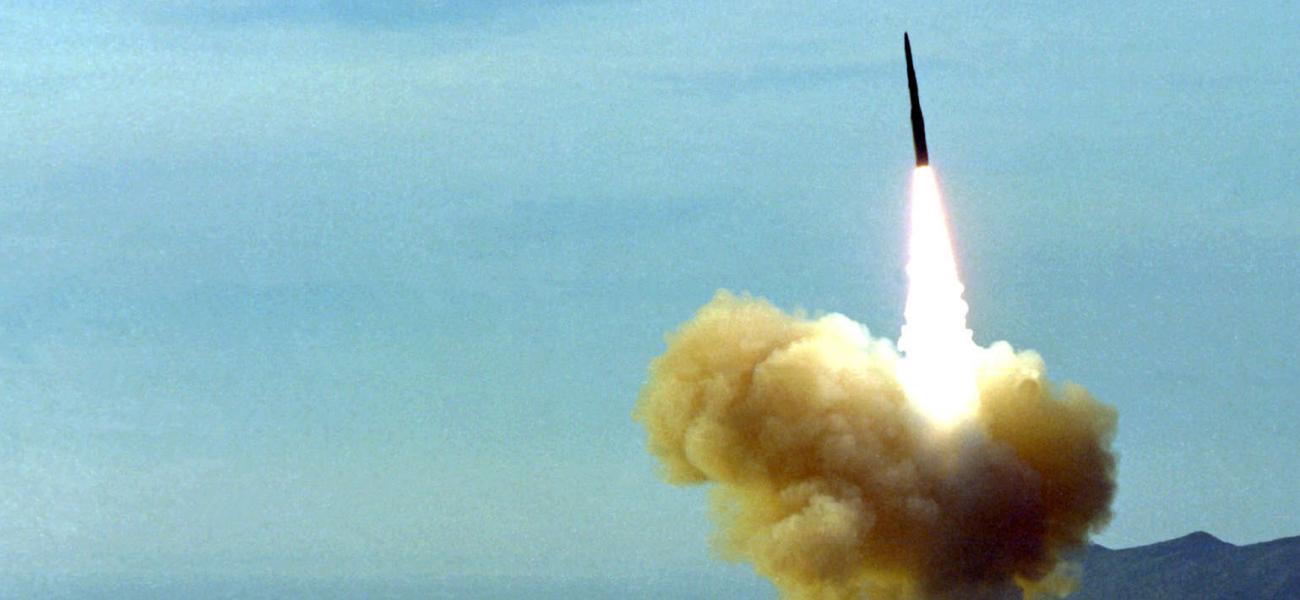
State report: LANL lost track of 250 barrels of nuke waste
The contractor that’s been in charge of Los Alamos National Laboratory’s operations for the past year lost track of 250 barrels of waste, while the company heading the legacy cleanup mislabeled and improperly stored waste containers and took months to remedy some infractions, according to the state’s yearly report on hazardous waste permit violations.
BY: SCOTT WYLAND | santafenewmexican.com
Triad National Security LLC, a consortium of nonprofits that runs the lab’s daily operations, had 19 violations of its permit from the New Mexico Environment Department. Newport News Nuclear BWXT Los Alamos, also known as N3B, which is managing a 10-year cleanup of waste generated at the lab, was cited 29 times. Triad’s most notable violation was shipping 250 barrels of mostly mixed waste to the Waste Isolation Pilot Plant in Carlsbad without tracking them. Mixed waste contains low-level radioactive waste and other hazardous materials. Inspectors found records still listed the waste at the national lab.
Mislabeled containers should be taken seriously because they can cause incidents if the contents aren’t identified, said Scott Kovac, research and operations director for Nuclear Watch New Mexico.
Lab personnel didn’t update the shipping data because they were waiting for WIPP to acknowledge it had received the waste, lab spokesman Matt Nerzig said in an emailed statement. “There was no risk to public health or safety and the inventory is now correct,” Nerzig said, adding that shipping updates now will be done when waste leaves the lab. But a watchdog group said failing to track such a high volume of waste is an egregious error that falls in line with the lab’s long history of serious missteps.
“The fact that LANL has mischaracterized, misplaced, mis-inventoried — or whatever — 250 barrels of waste is pretty astounding,” said Jay Coghlan, executive director of Nuclear Watch New Mexico. “We see mistakes being made by a new contractor. So definitely, all of this is cause for concern.”
Flammable hazard stalls LANL’s plutonium operations, waste shipments
Concerns that a calcium residue might be flammable prompted officials at Los Alamos National Laboratory to curtail plutonium operations and suspend waste shipments in early November, according to a federal report.
BY: SCOTT WYLAND | santafenewmexican.com
The lab suspended most waste generation and certification at its plutonium facility and halted all waste shipments after officials questioned the accuracy of documentation, particularly on how much calcium-and-salt residue remained in transuranic waste after processing, the Defense Nuclear Facilities Safety Board, an independent oversight panel, said in a Nov. 15 report that was publicly released Friday.
Calcium is used to help reduce oxidation in plutonium. Traces of the substance typically linger after processing, and if they are too high, they can ignite when exposed to open air, the report says.
The report didn’t say how long the operations and waste shipments were suspended. A lab spokesman could not comment Monday.
Officials from multiple agencies met in Carlsbad on Nov. 5 and 6 to discuss the hazard, including the National Nuclear Security Administration, Triad National Security LLC — the consortium that operates the lab — and N3B, a cleanup contractor. They concluded there wasn’t enough evidence of a flammable calcium level to keep operations suspended, the report said.
However, they decided to withhold shipments to the Waste Isolation Pilot Plant until further testing could be conducted, the report said.
The underground storage facility near Carlsbad forbids waste that has volatile chemicals mixed in.
WIPP became more vigilant about testing for flammable mixtures after a waste container was packaged in 2014 with a volatile blend of wheat-based kitty litter and nitrate salts, which caused it to explode and leak radiation. WIPP shut down for almost three years while it underwent a $2 billion cleanup.
Hazardous Waste Permit Renewal Begins for LANL
“If DOE and LANL continue to treat the public with disdain, it is going to be a long and difficult permitting process. All in all, this first meeting was disappointing and unproductive.” — Joni Arends, of CCNS
This week the renewal of the New Mexico Environment Department hazardous waste permit for Los Alamos National Laboratory (LANL) began in a very controlled public meeting at the Cities of Gold in Pojoaque. There was no presentation by the Department of Energy (DOE) or its contractor, Triad National Security, LLC, about their plans to renew the application. If the public had questions, they were instructed to write them on a half-sheet comment and question card. There was no explanation about if and how those comments and questions would be answered.
Listen to the full story:
CCNS has prepared a pre-emptive sample public comment letter you can use to express what needs to be included in LANL’s permit application, including proposals to install confined burn and detonation facilities, and coming into compliance with the federal and state hazardous waste laws and regulations dealing with tank systems (that are used to treat liquid hazardous and radioactive waste) and seismic requirements. The last surface rupture on the Pajarito Plateau fault system was 1,400 years ago – thus requiring additional LANL submittals and NMED review. LANL_Permit_Renewal_App_public_comment_120519 The current ten-year LANL permit expires in late December 2020. Under the regulations, the permit application is due to the Environment Department 180 days before the permit expires, or in late June 2020. https://www.env.nm.gov/hazardous-waste/lanl-permit/ The hazardous waste permit renewal application for the Waste Isolation Pilot Plant (WIPP) is on the same timeline. https://www.env.nm.gov/hazardous-waste/wipp-permit-page/ CCNS and others have made numerous requests to both LANL and WIPP management to submit their applications in the spring of 2020 to give additional opportunity for the public to review both. At the meeting, CCNS asked when LANL would submit its application. A LANL staff member said they could not disclose the date.
Defense policy deal creates Space Force, sidesteps border wall controversy
ARTICLE BY JOE GOULD | defensenews.com
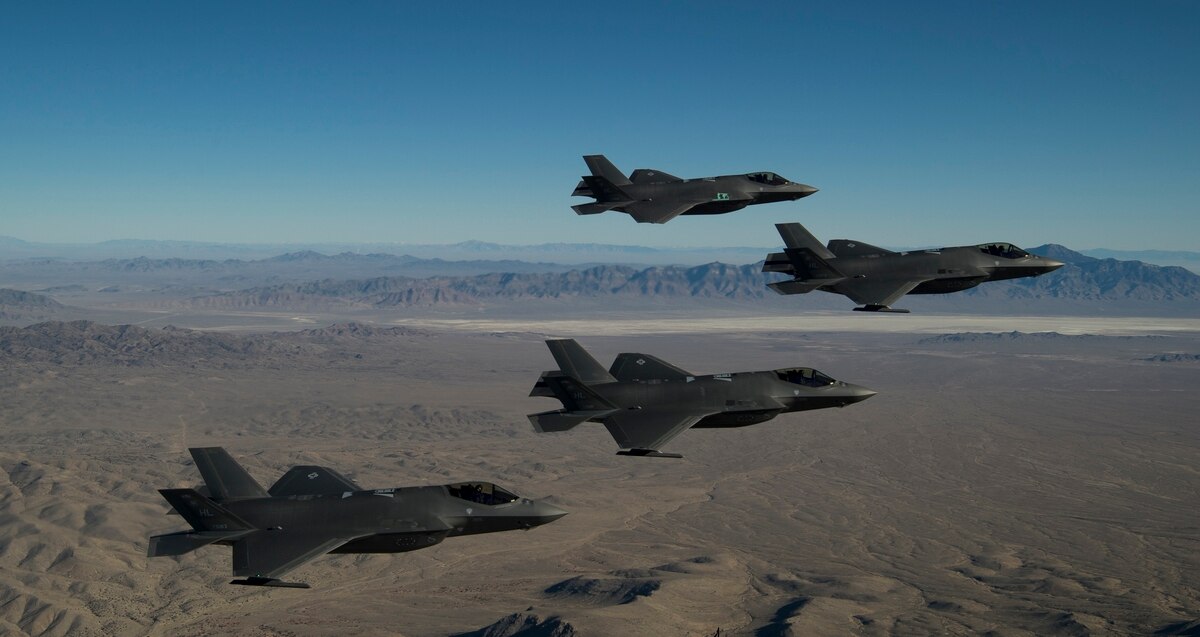
WASHINGTON ― Lawmakers involved in annual defense authorization negotiations finalized a sweeping deal late Monday that creates a new Space Force among other policies, but it dropped contentious border wall restrictions and several other provisions favored by progressives.
The 3,488-page compromise bill, which supports $738 billion in defense spending for 2020, left out limits on the border wall, low-yield nuclear weapons and the president’s authorization to wage war on Iran. However, Democratic leaders did win ― in exchange for the Space Force ― an agreement for 12 weeks of paid parental leave to millions of federal workers, which could give some House Democrats otherwise opposed to the large defense bill a reason to vote for it.
The agreement caps months of negotiations made unusually complex because Democrats control the House and Republicans the Senate. The House is expected to vote as soon as Wednesday, as Congress has only a few days to pass the bill before the House’s Christmas recess begins Thursday afternoon. President Donald Trump is expected to sign the bill into law.
CLW’s Analysis of FY Defense Authorization Conference Agreement
[embeddoc url=”https://nukewatch.org/wp-content/uploads/2019/12/CLW-FY-2020-NDAA-conference-report-analysis.pdf” width=”100%” height=”60%” download=”all” viewer=”google”]
SSFL stalemate
An informational meeting on Nov. 20 turned confrontational
ARTICLE BY MELISSA SIMON | simivalleyacorn.com
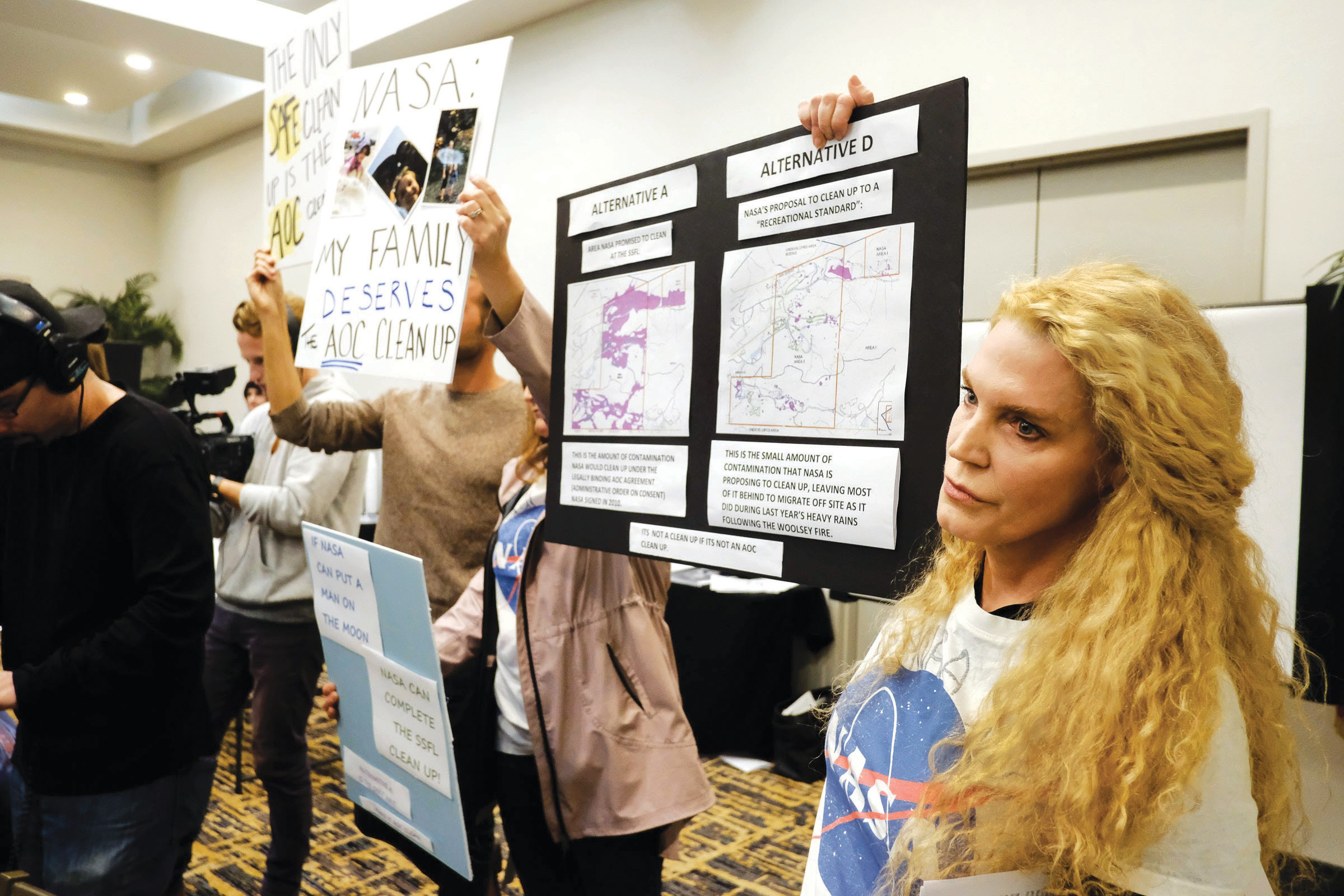
A public meeting regarding the long-delayed cleanup at the Santa Susana Field Lab last week got heated when police were called in to remove one of the activists waiting to give feedback on a recently released environmental impact study.
Dan Hirsch, president of the nonprofit nuclear policy organization Committee to Bridge the Gap, had planned to present a slideshow while giving his three minutes of testimony during a Nov. 20 event held by NASA at Best Western Posada Royale Hotel in Simi Valley. The three-minute time was allotted to anyone who chose to share comments related to the field lab.
But the longtime site cleanup activist said he was met with opposition from NASA officials, who physically tried to block the setup of a projector that he brought with him and then later called police to have him removed from the venue.
The confrontation lasted about 15 minutes, he said. And while he was waiting quietly in line to give his comments, Hirsch said police showed up and asked him to leave voluntarily or he would be charged with trespassing.
Fireworks at NASA meeting for cleaning up nuke meltdown at Santa Susana Field Lab
The 2,850-acre field lab in unincorporated hills just southeast of Simi Valley experienced the partial nuclear meltdown in 1959 when it was the Rocketdyne/Atomics International rocket engine test and nuclear facility. The site also experienced other chemical and radioactive contamination over the years.
ARTICLE BY MIKE HARRIS | vcstar.com
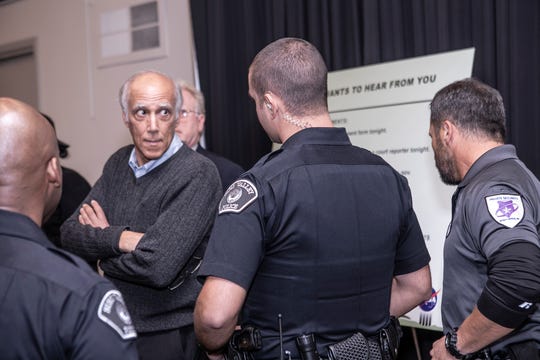
Fireworks erupted this week at a NASA public meeting on the much-delayed cleanup of a 1959 partial nuclear meltdown at the Santa Susana Field Laboratory outside Simi Valley.
Longtime cleanup activist Dan Hirsch, president of the Committee to Bridge the Gap, a nonprofit nuclear policy organization, said he was asked by Simi Valley police to leave Wednesday night’s meeting at the Best Western Posada Royale after trying unsuccessfully to present a slide show.
The meeting was held to allow the public to comment on NASA’s recently released Draft Supplemental Environmental Impact Statement regarding cleaning up its portion of the field lab site.
Sandia Labs Appoints Director
The next director of Sandia National Laboratories has ties to both national laboratories in New Mexico.
ARTICLE BY: SCOTT TURNER
abqjournal.com © 2019 Albuquerque Journal
James S. Peery will succeed Stephen Younger who is retiring at the end of the year. He will become the 16th laboratories director in Sandia’s 70-year history and will officially lead the labs beginning Jan. 1.
Peery, 57, worked at Sandia from 1990 to 2002 and then again from 2007 to 2015. He has served in multiple leadership capacities at Sandia and Los Alamos national laboratories during his career. He currently serves as Associate Laboratory Director of National Security Sciences at Oak Ridge National Laboratory in Tennessee.
Peery’s appointment was announced Monday afternoon
Nuclear News Archives – 2021
Nothing Found
It seems we can’t find what you’re looking for. Perhaps searching can help.
Nuclear News Archives – 2020
Nothing Found
It seems we can’t find what you’re looking for. Perhaps searching can help.
Nuclear News Archives – 2019
Nothing Found
It seems we can’t find what you’re looking for. Perhaps searching can help.
Nuclear News Archives – 2018
Nothing Found
It seems we can’t find what you’re looking for. Perhaps searching can help.

